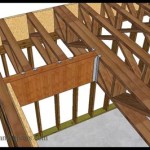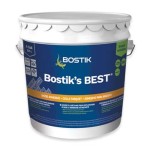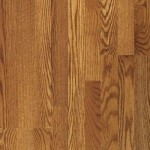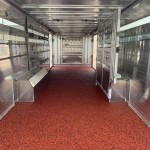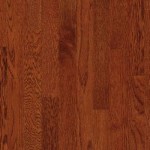Shaw Vinyl Flooring: A Comprehensive Overview
Shaw Industries Group, Inc., a subsidiary of Berkshire Hathaway, is a global leader in flooring solutions, and their vinyl flooring options are a significant part of their product portfolio. Shaw vinyl flooring encompasses a wide range of styles, constructions, and performance characteristics, designed to meet the diverse needs of residential and commercial spaces. Understanding the various aspects of Shaw vinyl flooring is crucial for consumers and contractors alike when making informed purchasing decisions.
Vinyl flooring, in general, has become increasingly popular due to its durability, water resistance, ease of maintenance, and affordability compared to other flooring options like hardwood or tile. Shaw vinyl leverages these inherent advantages, incorporating innovative technologies and design aesthetics to offer a compelling proposition for a variety of applications. This article provides a detailed examination of Shaw vinyl flooring, focusing on its construction, types, benefits, installation considerations, and maintenance requirements.
Types of Shaw Vinyl Flooring
Shaw offers a diverse range of vinyl flooring products, each with unique characteristics and suitability for specific applications. The primary categories of Shaw vinyl flooring include: Vinyl Sheet, Vinyl Tile, and Vinyl Plank.
Vinyl Sheet: Vinyl sheet flooring is a continuous, resilient flooring option that comes in large rolls. It is typically installed over a prepared subfloor using adhesives. Due to its seamless nature, vinyl sheet is highly water-resistant, making it an excellent choice for bathrooms, kitchens, and laundry rooms. Shaw vinyl sheet offerings often feature intricate patterns and designs, realistically mimicking the look of tile, stone, or wood. They are generally less expensive than vinyl plank or tile options.
The construction of vinyl sheet flooring typically involves several layers. The base layer provides stability, followed by a printed design layer that creates the visual appearance. A clear wear layer protects the design from scratches, stains, and fading. The thickness of the wear layer is a crucial factor in determining the durability and longevity of the flooring. Shaw offers vinyl sheet with varying wear layer thicknesses to cater to different levels of traffic and usage.
Vinyl Tile: Vinyl tile flooring consists of individual tiles that are installed individually, creating a modular design. It provides greater design flexibility compared to vinyl sheet, allowing for custom patterns and borders. Vinyl tile can be either glued down or installed using a click-lock system. Glue-down vinyl tiles offer enhanced stability, while click-lock tiles are easier to install and replace.
Shaw vinyl tile is available in a variety of shapes and sizes, including squares, rectangles, and even more unconventional forms. The surface textures can also vary, ranging from smooth to textured, further enhancing the realism of the design. The design layer is photographic, printed with high-resolution images to mimic materials like ceramic, porcelain, or natural stone. The wear layer, again, is critical to the tile's resistance to wear and tear.
Vinyl Plank: Vinyl plank flooring is designed to replicate the look and feel of hardwood flooring. It consists of individual planks that are typically installed using a click-lock system, creating a floating floor. Vinyl plank offers the aesthetic appeal of hardwood without the susceptibility to moisture damage and the higher price point. Shaw vinyl plank comes in a wide range of wood species, colors, and textures, providing a realistic representation of natural wood.
Like vinyl tile, vinyl plank features a multi-layered construction. The core layer provides dimensional stability, preventing the planks from warping or buckling due to temperature or humidity changes. The design layer is a photographic image of real wood, often with embossed textures that enhance the realism. The wear layer is paramount for protecting the surface from scratches, dents, and stains. Shaw offers vinyl plank flooring with varying wear layer thicknesses, suitable for both residential and commercial applications. Some Shaw vinyl plank products also incorporate an attached underlayment for added comfort and sound insulation.
Key Benefits of Shaw Vinyl Flooring
Shaw vinyl flooring offers a multitude of benefits that contribute to its widespread popularity. These advantages extend beyond mere aesthetics, encompassing aspects of durability, maintenance, and cost-effectiveness.
Durability and Water Resistance: One of the primary advantages of Shaw vinyl flooring is its exceptional durability. The multi-layered construction, combined with a robust wear layer, makes it resistant to scratches, dents, and stains. This durability makes it a suitable choice for high-traffic areas such as hallways, living rooms, and kitchens. Furthermore, Shaw vinyl flooring is inherently water-resistant, making it ideal for bathrooms, laundry rooms, and basements, where moisture exposure is a concern. The water resistance prevents the flooring from warping, buckling, or developing mold and mildew, ensuring long-term performance.
Ease of Maintenance: Shaw vinyl flooring is exceptionally easy to maintain, requiring minimal effort to keep it looking its best. Regular sweeping or vacuuming is sufficient to remove loose dirt and debris. For more thorough cleaning, a damp mop with a mild detergent is recommended. Unlike hardwood or tile, vinyl flooring does not require specialized cleaning products or sealing. Its stain-resistant properties make it easy to clean up spills and messes, further simplifying maintenance. The low maintenance requirements make Shaw vinyl flooring an attractive option for busy households and commercial establishments.
Design Versatility and Affordability: Shaw vinyl flooring offers unparalleled design versatility, allowing homeowners and designers to create a wide range of looks and feels. The availability of vinyl sheet, tile, and plank formats, combined with a vast selection of colors, patterns, and textures, provides endless design possibilities. Vinyl flooring can realistically mimic the appearance of natural materials such as hardwood, stone, and tile, often at a fraction of the cost. This affordability makes it an accessible option for budget-conscious consumers who desire the aesthetic appeal of premium flooring materials without the associated price tag. Moreover, the ease of installation, particularly with click-lock systems, can further reduce overall project costs by minimizing labor expenses.
Installation and Maintenance Considerations
Proper installation and maintenance are crucial for maximizing the performance and longevity of Shaw vinyl flooring. Following the manufacturer's instructions and adopting appropriate cleaning practices will help ensure that the flooring retains its beauty and functionality for years to come.
Installation Preparation: Before installing any type of Shaw vinyl flooring, it is essential to prepare the subfloor properly. The subfloor must be clean, dry, and level. Any imperfections, such as cracks or unevenness, should be repaired before installation. For glue-down installations, the subfloor should be smooth and free of any adhesive residue. For click-lock installations, an underlayment may be required to provide cushioning and sound insulation. Following the manufacturer's recommendations for subfloor preparation is critical for ensuring a successful installation.
Installation Techniques: The installation technique will vary depending on the type of Shaw vinyl flooring being installed. Vinyl sheet usually requires professional installation due to the need for precise cutting and gluing. Vinyl tile and plank can be installed by experienced DIYers, particularly with click-lock systems. It is important to follow the manufacturer's instructions carefully, paying attention to details such as expansion gaps and seam placement. Using the appropriate tools and techniques will help ensure a professional-looking installation that will last for years.
Maintenance Procedures: Maintaining Shaw vinyl flooring is relatively straightforward. Regular sweeping or vacuuming will remove loose dirt and debris, preventing them from scratching the surface. For more thorough cleaning, a damp mop with a mild detergent is recommended. Avoid using abrasive cleaners or harsh chemicals, as they can damage the wear layer. Wipe up spills promptly to prevent staining. Protect the flooring from heavy furniture by using felt pads under the legs. With proper care and maintenance, Shaw vinyl flooring can retain its beauty and functionality for many years.
In conclusion, Shaw vinyl flooring presents a compelling option for a wide range of applications due to its durability, water resistance, design versatility, and ease of maintenance. Understanding the different types of Shaw vinyl flooring, their benefits, and the proper installation and maintenance procedures is crucial for making informed decisions and ensuring long-term satisfaction.

Floorté Luxury Vinyl Shaw Floors

Shaw Endura Plus Almond Oak Lvp

Shaw Endura Plus Simple Wash Lvp

Shaw Floorte Pro Anvil Plus 2032v 05078 Greige Walnut 7 X 48 Spc Vin
Matrix By Shaw Floors Premium 8mm Thick X 7in 48in 20 Mil Waterproof Luxury Vinyl Plank Flooring 18 81 Sq Ft Ctn Costco

Shaw Floorte Valore Wpc Low Cost Waterproof Vinyl Plank

Shaw Floors Prestige 6 In X 36 Homestead Oak Luxury Vinyl Plank 11 81 Sq Ft Carton Com

Shaw Vinyl Plank Flooring Is One Of The Leading Brands And Offers Features Not Found I Luxury

Shaw Endura Plus Modern Classic Lvp

Shaw Reflection 12 Cleansed Oak Mil X 7 In W 48 L Waterproof Glue Down Luxury Vinyl Plank Flooring The Department At Com
Related Posts

